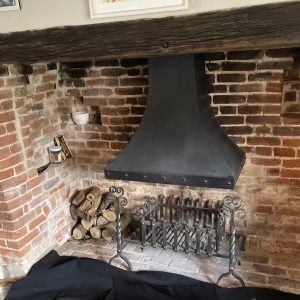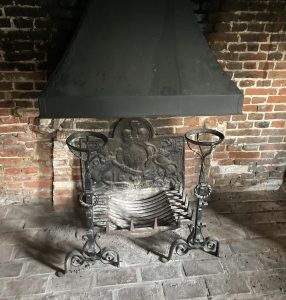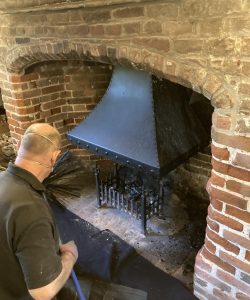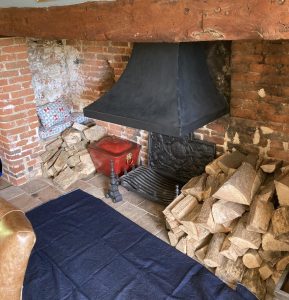
I was thinking about what to do for my weekly blog this week and looking back at my recent posts I realized that they largely focus upon wood stoves of various shapes and sizes. So, this week I thought I would break things up a bit and write about something a bit different and that is definitely not a wood stove! Although we do sweep more stoves than anything else, unsurprisingly we do sweep other things, for example, Aga’s, Rayburns, Parkrays, small open fires and of course large inglenook chimneys. This week I thought for a change I would focus upon large inglenook chimneys.
It is possible to divide large inglenook chimneys into two broad categories, large opening inglenook chimneys, where the bottom of the fireplace runs straight into the chimney and large inglenook chimneys which have some form of register plate with inspection hatches. large inglenook chimneys with register plates usually have some form of fire hood attached to the register plate and are used to assist the draw of the chimney. This is because large inglenook chimneys were the first kind of chimney, i.e., built at the start of the development of chimney technology and therefore they are frequently not particularly efficient at what they do. Often, I find that the fire dog/grate is raised in some way, usually on bricks, to bring it closer to the hood or chimney opening, again this is done to assist the draw of the chimney and stop the combustion gasses lapping back into the room. I sweep them using a number of different Inglenook brushes, from stiff to soft. It is a time-consuming process as each side of these large chimneys have to be swept individually from top to bottom and if there is a register plate it has to be cleaned off. All part of the busy sweeps work.





 My name is Paddy McKeown, I am a retired police officer (Detective Sergeant – Metropolitan Police), turned chimney sweep. I have completed training with ‘The Guild of Master Chimney Sweeps’, and Rod Tech UK (Power Sweeping).
My name is Paddy McKeown, I am a retired police officer (Detective Sergeant – Metropolitan Police), turned chimney sweep. I have completed training with ‘The Guild of Master Chimney Sweeps’, and Rod Tech UK (Power Sweeping).




Comments are closed.